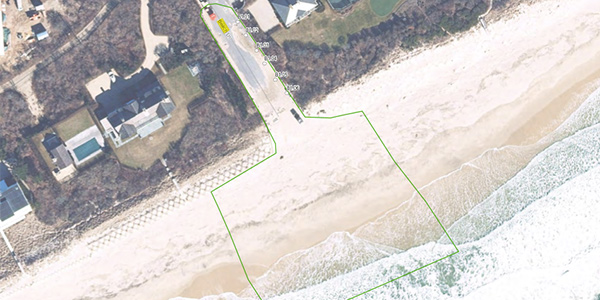The South Fork Wind Project will have negligible to moderate environmental impacts from construction, operation and decommissioning, according to a draft environmental impact statement (DEIS) issued by the Bureau of Ocean Energy Management last week.
The 132-MW offshore wind joint venture between Ørsted and Eversource Energy would consist of up to 15 wind turbines with a capacity of 6 to 12 MW each located about 30 nautical miles east of Montauk Point, N.Y.
BOEM will hold virtual public meetings on Feb. 9, 11, and 16 where it will accept comments submitted or postmarked no later than Feb. 22 before completing the EIS.
Environmental Impacts
The DEIS categorizes potential adverse or beneficial impacts as negligible, minor, moderate or major, comparing impacts from alternative scenarios and summarizing key findings for the project’s proposed Construction and Operations Plan (COP).
The developers proposed an offshore substation within the lease area, with associated export cables subject to applicable mitigation measures — turbines laid out in a uniform east–west and north–south grid with 1-square-nautical-mile spacing between turbines and diagonal transit lanes at least 0.6 nautical miles wide — spacing agreed on by all OSW developers last summer and recommended by the U.S. Coast Guard. (See Developers Seek 1-Mile Spacing for Vineyard Wind.)
“Impacts associated with the other action alternatives are generally similar to those described for the proposed action,” BOEM said.
The agency outlined four possible regulatory choices:
- “no action,” the equivalent to rejecting the project outright;
- approving it as proposed;
- an alternative layout with a 4-nautical-mile-wide vessel transit lane as proposed by the Responsible Offshore Development Association; or
- a “fisheries habitat impact minimization” alternative that would exclude certain turbines and associated cable locations if micro-siting is not possible.
It said it incurred costs of $1.8 million in drafting the EIS, which assesses impacts on air and water quality, bats and birds; marine mammals and sea turtles; benthic habitat; land and wetlands; fisheries and tourism; cultural resources; employment; social justice; and federal income.
Regarding marine mammals, “some individual whales or seals could suffer temporary or permanent hearing injury; these adverse effects would be moderate for affected individual marine mammals [and] overall cumulative adverse impacts would be moderate,” the report stated.
Commercial fisheries and for-hire recreation fishing might suffer moderate adverse effects from increased port congestion and reduced fishing opportunity during construction. Fishing gear could be lost or damaged, and catches might decline if target species avoid construction areas. The “reef effect” of turbine foundations and associated scour protection would have minor beneficial impacts to recreational fisheries, depending on the extent to which the foundations enhance fishing opportunities. Overall cumulative adverse impacts would be moderate, it said.
The report foresees that “overall cumulative adverse impacts [on navigation and vessel traffic] would be moderate.”
It also projects overall cumulative impacts to employment, federal revenue and income to be minor.
On social justice issues, the DEIS sees “minor to moderate adverse impacts to minority or low-income populations and tribes from the project,” with moderate cumulative adverse impacts overall.
Land Ahoy!
BOEM last summer held a series of public hearings on its supplemental environmental impact statement (SEIS) for the Vineyard Wind project in federal waters south of Massachusetts. It was to issue its final EIS in December and make a final decision by January. Vineyard Wind is a joint venture between Copenhagen Infrastructure Partners and Avangrid Renewables.
However, early in December Vineyard Wind announced a supplier agreement with General Electric for 13-MW Haliade-X turbines, supplanting a previous deal with MHI Vestas and delaying final approval of the project for some months. (See Offshore Wind Looks at Crowded Future in New England.)
The preferred landfall site for the South Fork export cable (SFEC Route A) is at the parking lot at the southern end of Beach Lane, with a new terrestrial cable to be buried under paved roadways and the Long Island Railroad right-of-way to the interconnection facility.
A survey identified three archaeological sites or historic properties within or adjacent to proposed alternative landing sites and potential routes for the onshore cable, which are no longer being considered for the project and therefore will not be affected, BOEM said.
There are no previously reported archaeological sites along Beach Lane, and none were identified during shovel testing there, at the Hither Hills landing site or within the proposed onshore substation sites.
The East Hampton Town Board will hear public comments on its agreement to allow the export cable to come ashore under Beach Lane or elsewhere on Jan. 12 and will then vote on the contract.





